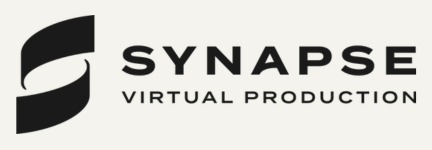
From Decibels To Decimals: A History of Music Psychology and Effectiveness

Measuring ad effectiveness is a hot topic. And when it comes to impact, nothing works quite like music. It’s the direct line to emotion, the sweet spot every marketer wants to hit. But music is an art, which makes it notoriously tricky to measure and decode. That’s where SoundCheck comes in. SoundCheck is an in-depth sonic audit that analyzes your brand's current use of music and provides strategic recommendations on how to improve brand impact and level up your sound. We’ve found a way to help brands measure just how well their music choices resonate, and the impact they deliver.
The idea, however, isn’t new. Long before brands caught on, psychologists were already diving deep into how music influences consumer behaviour. Let’s take a quick trip through sonic history and explore the giants whose shoulders we stand on today.
Music’s Subconscious Impact
In ‘82, psychologist Gerald Gorn decided to replicate Pavlov’s famous experiment, where dogs learned to link the sound of a bell with food, and eventually started to drool just from hearing the bell. Gorn wanted to see if humans can be ‘primed’ using music in a similar way.
In his experiment, he asked participants to choose between two pens: one was shown whilst participants heard music that they liked, and the other was shown alongside ‘disliked’ music. Although the pens were almost identical, 79% chose the pen associated with the liked music.
In that same year, psychologist Ronald Milliman ran an experiment in a supermarket, and found that playing slower tempo music led to increased time spent shopping and higher sales. These researchers were already making important discoveries about the ability of music to unconsciously ‘prime’ us and influence our behaviour and buying decisions.

Why Some Music Just Hits Different
With all this in mind, you may be asking yourself, what is the ‘right music’ for your brand? The answer will depend heavily on who you ask. However, researchers have tried to pinpoint it. Unsurprisingly, it largely depends on what your brand aims to convey and how it wants to be perceived by consumers.
There is some evidence, though limited, that directly relates to musical structure. Brands that use descending melodies are seen as more ‘down to earth’, while a fade-up with an ascending pitch feels less aggressive than a fade-down with a descending pitch.
Dr. Charles Spence from Oxford University noted that both Intel and McDonald’s sonic logos follow a five-note structure, a common trait among successful such logos. Dr. Kristin Stewart from CSUSM College of Business Administration found that music tempo in commercials affects consumer emotions – faster tempos create excitement, while slower ones evoke sadness.
While research can identify musical patterns that might tickle your brain in certain ways, the best branding isn’t just about following a formula – it’s about capturing something unexpected. The most iconic music and sound don’t just ‘tick the right boxes’; they evoke emotion in ways that can’t always be measured. There’s a certain magic, an unquantifiable element, that makes a melody stick with us. It’s the moment that catches us off guard and makes us feel something.
The Science of Standing Out
In the wider advertising world, agencies have begun integrating consumer testing into their process, gathering data to support creative decisions. At the intersection of marketing and psychology, ‘Marketing Effectiveness’ has emerged as a must-know topic for today’s marketeer. System1, a behavioural testing company for advertising, are a leading voice in the industry, and Les Binet and Peter Field (authors of ‘The Long and Short of It’) are now regular fixtures on the marketing conference circuit.
Recently, the ad industry has begun to invest in validating and proving the commercial power of music and sound – backed by some compelling stats. A 2020 IPSOS study found that, on average, audio assets were 3.44 times more effective than visual assets at capturing the attention of the target audience. Our own Music of Sportswear report found that the strategic use of music can boost brand loyalty by up to 50%.
Still, for music to sell, it often needs to be sold internally. Convincing stakeholders to invest in a stronger music strategy is the first hurdle (tip: keep an eye out for our upcoming research paper, linking music directly to business outcomes).
At MassiveMusic and Songtradr, our research team exists to help brands build their sound - rooted in data, guided by insight. Soundcheck, a research tool designed to audit and enhance brands’ use of music and sound, delivers exactly this.
As researchers in the music advertising industry, we are energized by this industry shift towards effectiveness and proud to see data and music working together to drive real results.















